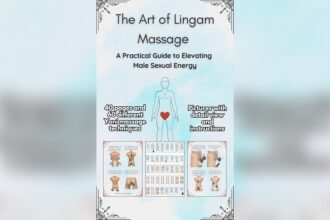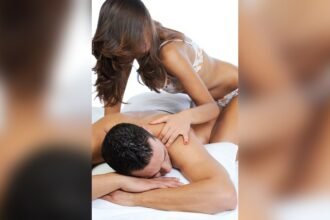Ever wondered why massages sometimes leave bruises? I’ve been there too. I looked into how to treat and prevent these marks.
Massage bruises are not rare but can surprise you. Knowing how to handle them is key for massage lovers. I’ve found quick tips to help you recover from bruises, big or small.
Key Takeaways
- Bruises from massage are caused by broken blood vessels under the skin
- Immediate ice application can help reduce bruise size and swelling
- Elevating the affected area aids in minimizing bruise formation
- Post-massage bruises typically heal within two weeks
- Proper communication with your massage therapist can help prevent future bruising
Understanding Post-Massage Bruising
Many people worry about bruising after a massage. I’m here to explain why it happens and when it’s okay.
What causes bruising after a massage?
Massage therapy bruising comes from deep pressure on tiny blood vessels near the skin. This can happen with intense techniques to loosen muscle knots. Blood then leaks into the surrounding tissues, causing marks.
Is bruising after a massage normal?
Some bruising is normal, especially after deep tissue massages. Your body’s makeup affects how you bruise. If you bruise easily or take blood thinners, you might see marks more often. But, most bruises from massages are harmless and go away quickly.
Types of massages more likely to cause bruising
Not all massages carry the same risk of bruising. Here’s a quick guide:
- Deep tissue massage: High pressure targets deep muscle layers
- Sports massage: Intense techniques prepare athletes for performance
- Swedish massage: Generally gentler, less likely to cause bruising
Remember, talking to your therapist is key to reducing bruising. Let them know your pressure preferences and any concerns. They can adjust their technique to help you avoid bruises while still treating you effectively.
Immediate Actions to Take After Noticing Bruises

When I see bruises after a massage, I act fast. The first thing I do is apply ice. It helps reduce swelling and makes the bruise smaller.
I wrap the ice in a cloth to protect my skin. Then, I apply it for 10 minutes at a time. Next, I elevate the bruised area above my heart. This helps blood flow better and speeds up healing.
I also avoid massaging the bruised area. Massaging can break more blood vessels and make the bruise bigger. Instead, I rest and avoid hard activities to prevent more damage.
“Rest is nature’s best healer when it comes to bruises. Give your body the time it needs to repair itself.”
Here’s a quick guide I follow for immediate bruise care:
| Action | Duration | Frequency |
|---|---|---|
| Apply Ice | 10 minutes | Every 1-2 hours |
| Elevate Area | 15-20 minutes | 3-4 times daily |
| Rest | As much as possible | First 24-48 hours |
By following these steps, I’ve found that I can significantly speed up the healing process and minimize discomfort from massage-related bruising.
How to Treat Bruising After Massage
Quickly treating massage bruises is key to recovery. I’ve discovered several ways to help bruises heal faster and feel better.
Applying ice to reduce swelling
Ice is my first choice for quick relief. I wrap an ice pack in a towel and apply it for 10 minutes. This reduces swelling by constricting blood vessels.
Using heat therapy after 48 hours
After two days, I use heat. A warm compress or heating pad increases blood flow and helps healing. I apply heat for 15-20 minutes, several times a day.
Elevating the affected area
Elevating the bruised area is important. I keep it above heart level to reduce swelling and blood pooling.
Compression techniques
Gentle compression is also helpful. I use an elastic bandage, wrapping it firmly but not too tight. This eases swelling and supports the area.
| Treatment | Timing | Duration | Benefit |
|---|---|---|---|
| Ice therapy | Immediately | 10 minutes | Reduces swelling |
| Heat therapy | After 48 hours | 15-20 minutes | Improves blood flow |
| Elevation | Ongoing | As much as possible | Decreases blood pooling |
| Compression | As needed | Variable | Supports healing |
By using these treatments and resting, I’ve seen big improvements in bruise healing after massages.
Natural Remedies for Massage-Related Bruises

If you’re dealing with bruising from massage, natural remedies can help. I’ve found several options that work well for treating massage bruising.
Arnica Cream
Arnica cream is a popular choice for treating bruising after massage. It contains compounds that reduce inflammation and promote healing. I apply it gently to the affected area several times a day for best results.
Bromelain Supplements
Bromelain, an enzyme found in pineapples, can help with massage bruising. I take bromelain supplements to speed up the healing process. It’s important to consult a healthcare provider before starting any new supplement regimen.
Aloe Vera Application
Aloe vera is known for its soothing properties. I apply pure aloe vera gel to bruised areas after a massage. Its vitamins and minerals help nourish the skin and reduce discoloration.
Vitamin K-Rich Foods and Supplements
Increasing vitamin K intake can accelerate bruise healing. I incorporate foods like leafy greens, broccoli, and Brussels sprouts into my diet. For more severe bruising from massage, I consider vitamin K supplements under medical guidance.
| Natural Remedy | Application Method | Frequency |
|---|---|---|
| Arnica Cream | Topical | 3-4 times daily |
| Bromelain | Oral supplement | As directed |
| Aloe Vera | Topical | 2-3 times daily |
| Vitamin K | Diet or supplement | Daily |
By incorporating these natural remedies, I’ve found significant improvement in how quickly my massage-related bruises heal. Remember, consistency is key when using these treatments for bruising after massage.
Over-the-Counter Solutions for Bruise Treatment

When you get bruised from massage therapy, there are OTC remedies that can help. I’ve found some great options to speed up healing and ease pain.
Pain relievers like ibuprofen or naproxen are good for managing pain and swelling. They work best in the first 24-48 hours after a bruise shows up. But, they might make bleeding a bit more likely, especially for older adults or those on blood thinners.
Topical creams with vitamin K or arnica are also popular. You can apply them right to the bruised spot to help it heal. I’ve found arnica gel to be really effective in making bruises from massage look less noticeable.
- Ibuprofen or naproxen for pain and swelling
- Vitamin K creams for faster healing
- Arnica gel for bruise reduction
It’s key to follow the instructions on any OTC product for treating bruises after massage. If you’re unsure about using these, especially with health issues, talk to a doctor first.
“Always prioritize your health and safety when treating massage-related bruises. When in doubt, seek professional medical advice.”
The Role of Rest and Gentle Movement in Healing
Finding the right balance between rest and movement is crucial for healing massage bruises. This approach can greatly speed up recovery and lessen discomfort. Let’s see how rest and gentle exercises help in reducing massage bruises.
Importance of Rest for Recovery
Rest is vital for healing massage bruises. It allows your body to fix damaged blood vessels and tissues. For the first 48 hours after noticing a bruise, avoid strenuous activities. This lets your body start healing without any interruptions.
Gentle Exercises to Promote Circulation
After resting, gentle movements can help in healing massage bruises. These movements increase blood flow to the affected area, speeding up recovery. Here are some exercises I find helpful:
- Slow walking
- Gentle stretching
- Light yoga poses
- Arm or leg rotations
The goal is to improve circulation without causing more harm. If you feel pain, stop right away. Combining rest with gentle exercises helps your body heal massage bruises quickly and well.
Preventing Bruises in Future Massage Sessions
Preventing bruises is key to managing bruising after bodywork. Talking to your massage therapist is very important. Before your session, tell them about any concerns about bruising or skin sensitivity. This lets them adjust their techniques for a safer, more comfortable massage.
If you bruise easily or take medications that increase bruising risk, let your therapist know. They can then tailor the massage pressure and avoid problematic areas. Staying hydrated before and after the massage improves circulation and reduces bruising chances.
Here are some tips I follow to minimize bruising:
- Avoid aspirin or ibuprofen before massage, as they can increase bruising risk
- Use warm compresses before the massage to relax muscles
- Wear loose, comfortable clothing to your session
- Inform your therapist immediately if you feel discomfort during the massage
By following these strategies, I’ve significantly reduced my chances of bruising after massages. Remember, effective massage bruise care starts with prevention. Your therapist is there to help, so don’t hesitate to voice your concerns and work together for a safe, enjoyable experience.
When to Seek Medical Attention for Massage Bruises
Massage bruises are common, but knowing when to get medical help is key. I’ll show you signs that mean you should see a doctor. This way, you’ll know when to worry about complications.
Signs of Severe Bruising
Not all bruises are the same. If home remedies don’t work, it’s time to see a doctor. Watch for these warning signs:
- Extreme pain that doesn’t subside
- Swelling that persists or worsens
- Bruises covering large areas of your body
- Redness spreading beyond the bruised area
Potential Complications to Watch For
What looks like simple bruising might be a sign of something serious. Be on the lookout for these symptoms:
- Fever or chills
- Dizziness or lightheadedness
- Nausea or vomiting
- Difficulty moving the affected area
If you have these symptoms with bruising, get medical help right away. Knowing how to treat bruises is good, but knowing when to seek help is crucial for your health.
The Healing Timeline: What to Expect
Understanding how massage bruises heal can ease your worries. Many clients worry about bruises from massage. But knowing the typical healing time can help.
The healing of bruises is a colorful journey. Right after your massage, you might see reddish marks. This is fresh blood rushing to the area.
Within a day or two, these spots darken to blue or purple. This is because the blood is losing oxygen. Around the 5-day mark, your bruise may turn green. This is a good sign! It means your body is breaking down the trapped blood.
As healing progresses, you’ll see yellow tones emerge. This is a sign of further healing.
| Stage | Color | Timeframe |
|---|---|---|
| Initial | Red | 0-24 hours |
| Early | Blue/Purple | 1-2 days |
| Mid | Green | 5-10 days |
| Late | Yellow/Brown | 10-14 days |
By the two-week mark, most massage bruises fade to light brown and then disappear. Remember, everyone heals at their own pace. The severity of the bruise, your age, and health can affect the timeline.
If you’re worried about persistent bruising, talk to your healthcare provider or massage therapist. They can offer guidance.
Tips for Communicating with Your Massage Therapist
Talking openly with your massage therapist is crucial to avoid and handle bruising. I share my health history and worries to get a massage that fits me.
Discussing your bruising concerns
I always tell my massage therapist about any medicines that might make me bruise more. I also tell them about spots where I’ve bruised before. This lets them adjust their methods for treating bruises after the massage.
Adjusting massage techniques for sensitive skin
If you have sensitive skin, it’s important to speak up during the massage. I always tell my therapist if the pressure is too much. They can then change their method to lower bruising risk.
| Communication Point | Why It’s Important |
|---|---|
| Medical history | Helps therapist understand bruising risks |
| Pressure preferences | Ensures comfort and reduces bruising chances |
| Sensitive areas | Allows therapist to use gentler techniques |
| Post-massage concerns | Enables proper guidance for at-home care |
Remember, your massage therapist wants to help. By talking openly about your bruising worries, you can work together for a safe and effective massage.
Conclusion
Bruising after a massage is common, especially with deep tissue work. I’ve found that acting fast is crucial in reducing bruises. Applying ice right away, resting, and elevating the area can really help speed up healing.
Natural remedies like arnica cream and foods rich in vitamin K can boost healing. Over-the-counter solutions are also handy. The main goal is to ease discomfort and promote faster recovery from massage-related bruises.
I’ve learned that prevention is just as important as treatment. Talking openly with your massage therapist about pressure and your skin’s sensitivity can make a big difference. If bruising is severe or you notice other worrying symptoms, it’s best to check with a doctor. By taking these steps, we can enjoy the benefits of massage while minimizing any unwanted after-effects.
FAQ
What causes bruising after a massage?
Is bruising after a massage normal?
What types of massages are more likely to cause bruising?
What should I do immediately after noticing bruises from a massage?
How can I reduce swelling and bruise size after a massage?
What natural remedies can help with massage-related bruises?
Can over-the-counter medications help with bruising after a massage?
How important is rest for bruise recovery after a massage?
How can I prevent bruising in future massage sessions?
When should I seek medical attention for massage-related bruises?
What should I expect during the healing process for bruises from massage?
How can I communicate effectively with my massage therapist about bruising concerns?
Source Links
- Bruising After Deep Tissue Massage: Is It Normal? — Spa Theory – https://www.spatheory.com/spa-theory-wellness-beauty-blog/bruising-after-deep-tissue-massage
- What Helps a Bruise Heal? – https://www.webmd.com/first-aid/helping-bruise-heal
- Bruising after a deep tissue massage. Causes, prevention – https://pro-physio.com.au/bruising-after-a-deep-tissue-massage-causes-prevention-and-whats-normal/













5 Comments
Interesting read! But could deep tissue massage potentially increase the risk of bruising compared to other types? Just pondering.
Interesting read, but do you think applying heat instead of cold might speed up the healing of post-massage bruises?
Interesting read! But isnt bruising a sign of excessive pressure during a massage? Shouldnt this be avoided, not just treated afterwards?
Interesting article, but arent some people more prone to bruising? Maybe genetic factors should be considered in post-massage treatment too?
Interesting read! But isnt the severity of post-massage bruising tied to the individuals overall health and their bodys response to pressure?